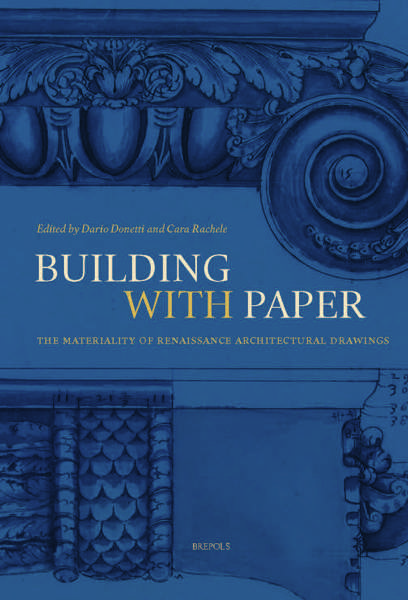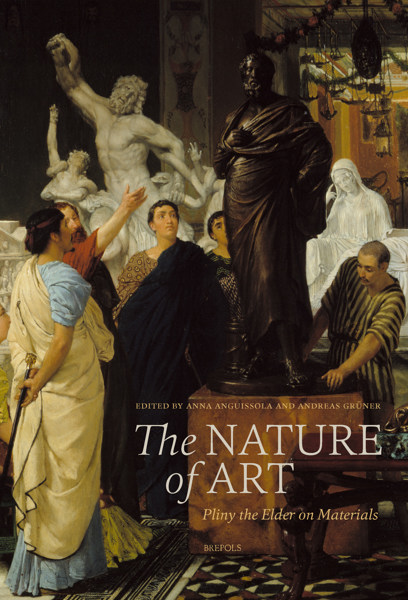
- Pages: 341 p.
- Size:180 x 265 mm
- Illustrations:5 b/w, 233 col.
- Language(s):English, Italian
- Publication Year:2025
- € 125,00 EXCL. VAT RETAIL PRICE
- ISBN: 978-2-503-60025-3
- Hardback
- Available
This volume presents case studies of the use of the drill, ranging from Ancient Egypt to the beginning of the twentieth century.
Paola D’Agostino is Director of the Musei Reali in Turin.
Lucia Simonato is full professor in Early Modern European Art History at the Universiy of Vienna.
“The story of the use of the drill in European sculpture has not yet been written, although it should be fascinating.” So argued Rudolf Wittkower in one of the lectures on the processes and principles of sculpture that he gave as Slade Professor of Fine Arts at Cambridge in 1970. In agreement with Wittkower’s view, this volume presents a series of case studies on the use of the drill ranging from ancient Egypt to the beginning of the twentieth century. Conceived as a catalogue for an ideal exhibition, the book illustrates, in chronological order, various works of art whose creation significantly depended on this tool: not only statues and bas-reliefs, but also architectural decoration, vases in precious stone and utilitarian objects, made in a range of materials including marble, wood, clay, ivory and more.
This variety highlights the extraordinary challenge faced over millennia by the drill in its numerous forms (bow drills, gimlets, pump drills, to name but a few), which did not undergo significant technological transformation until the advent of electricity. This tool directly confronted, to a greater extent than others, the hardness of the sculptural materials, piercing them, splitting them and manipulating them beyond any apparent limitation set by nature. In its tussle with the drill, the very affordance of the material was threatened, defeated by the expressive will of the sculptors, their visual cultures, their frames of reference and their notions of nature and art.
This volume is devoted to the exploration and understanding of this challenge.
Published with the support of the Henry Moore Foundation.
Editors’ Preface
Introductory Essays
Nicholas Penny, Traces of the Drill in Ancient and Modern Sculpture: A Survey
Lucia Simonato, The Ill-famed Drill. The Anti-Hero of Sculpture from Winckelmann to Modernism
Atlas
Sante Guido and Lucia Simonato, Rotational Drilling Instruments
Works and Tools
Enrico Ferraris, Notes on the Drill and Perforation in Ancient Egypt
Enrico Ferraris, In the Workshops of Egyptian Carpenters
Raphaël Jacob, The Drill in Archaic and Classical Marble Sculptures of the Acropolis
Carmela Capaldi, The Running Drill as a Signature Motif in Roman Art
Fabio Guidetti, Between Nature and Artifice: The Portraits of the Roman Imperial Period
Sarah Guérin and Francesca Pistone, A Late Antique Inheritance and Carolingian Taste
Martina Rugiadi, Notes on Absences: Towards Charting the Use of the Drill in Medieval Islamic Stonework and its Modern Investigation
Julien Chapuis, Expediency and Effect: The Drill in Medieval Sculpture North of the Alps
Laura Cavazzini, Tuscan Sculpture in the Mid-Thirteenth Century, Between East and West
Marco Collareta, The Drill Serving the Chisel in a Fourteenth-Century Monumental Sculpture Group in Pisa
Luca Palozzi, The Pump Drill in Late Medieval and Early Modern Tuscany: Metal Bits and Deer Leather Straps
Marco Scansani, The “fictitious Drill” in Fictile Renaissance Sculpture
Francesca Maria Bacci, The Ornament Technique in Florentine Workshops of the Fifteenth Century
Matteo Ceriana, The “rosicante trepano” of the Venetian Renaissance
Luca Annibali, Drilling Marble to Restore the Antique
Grégoire Extermann, Porphyry in Cosimo I’s Florence: Carving Versus Abrading
Riccardo Gennaioli, The Secrets of Mannerist Wheels for Engraving Fine Semi-Precious Stones
Sante Guido, From Father to Son: Pietro Bermini in Early Seventeenth-Century Rome
Lucia Simonato, Gian Lorenzo Bermini and his Masters in the Art of Drilling
Jennifer Montagu, Of Grooves and Holes: Drilled Outlines in Roman Baroque Sculpture
Vittoria Brunetti, Late Seventeenth-Century Sculptural Practice Between Style and Fascination with the Antique
Milena Maria Dean, Boxwood and Stone Pine in the Venetian Baroque
Valeria Rotili, Traces of Pointing and of Other Drill Uses in Eighteenth-Century Sculpture, Between Rome, Paris and Turin
Elena Catra, Canova’s “finishing touches”
Omar Cucciniello, The Bravura of the Milan School in the Nineteenth Century
Margherita d’Ayala Valva, Wildt’s “great virtue of shadow”
Giovanni Casini, “My great adventure”: Epstein’s The Rock Drill
Bibliography
Index of Names and Places compiled by Chiara Pazzaglia


